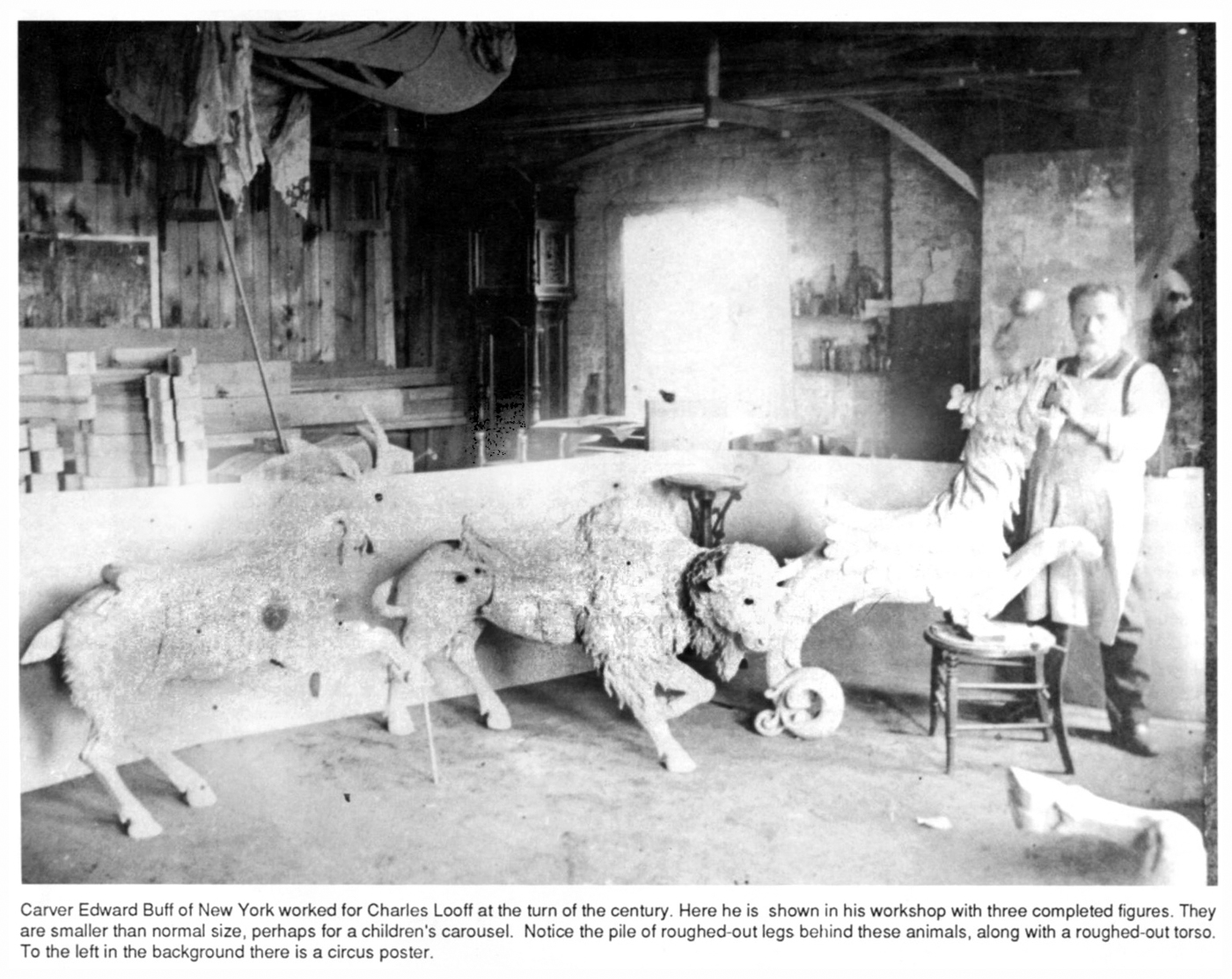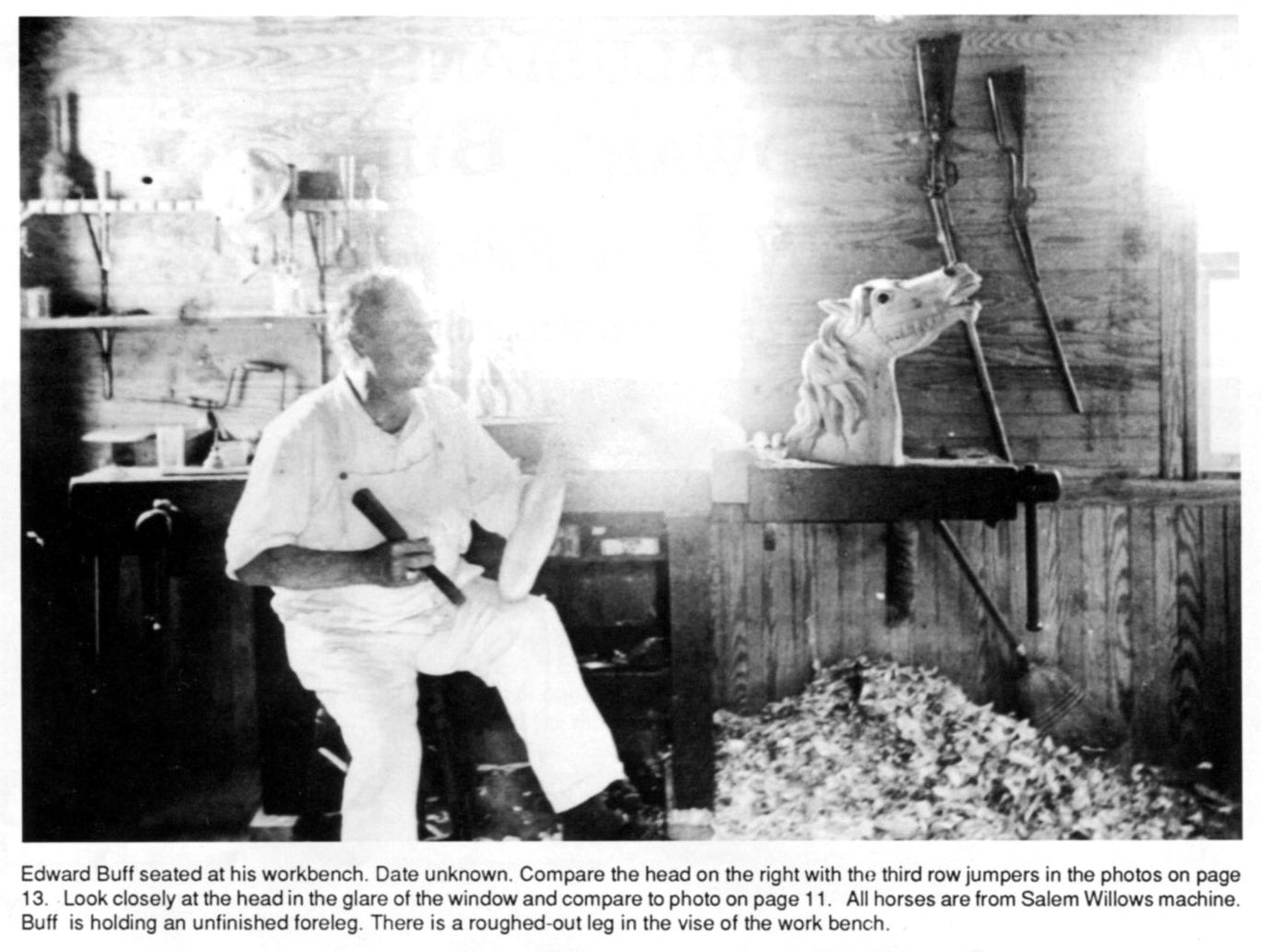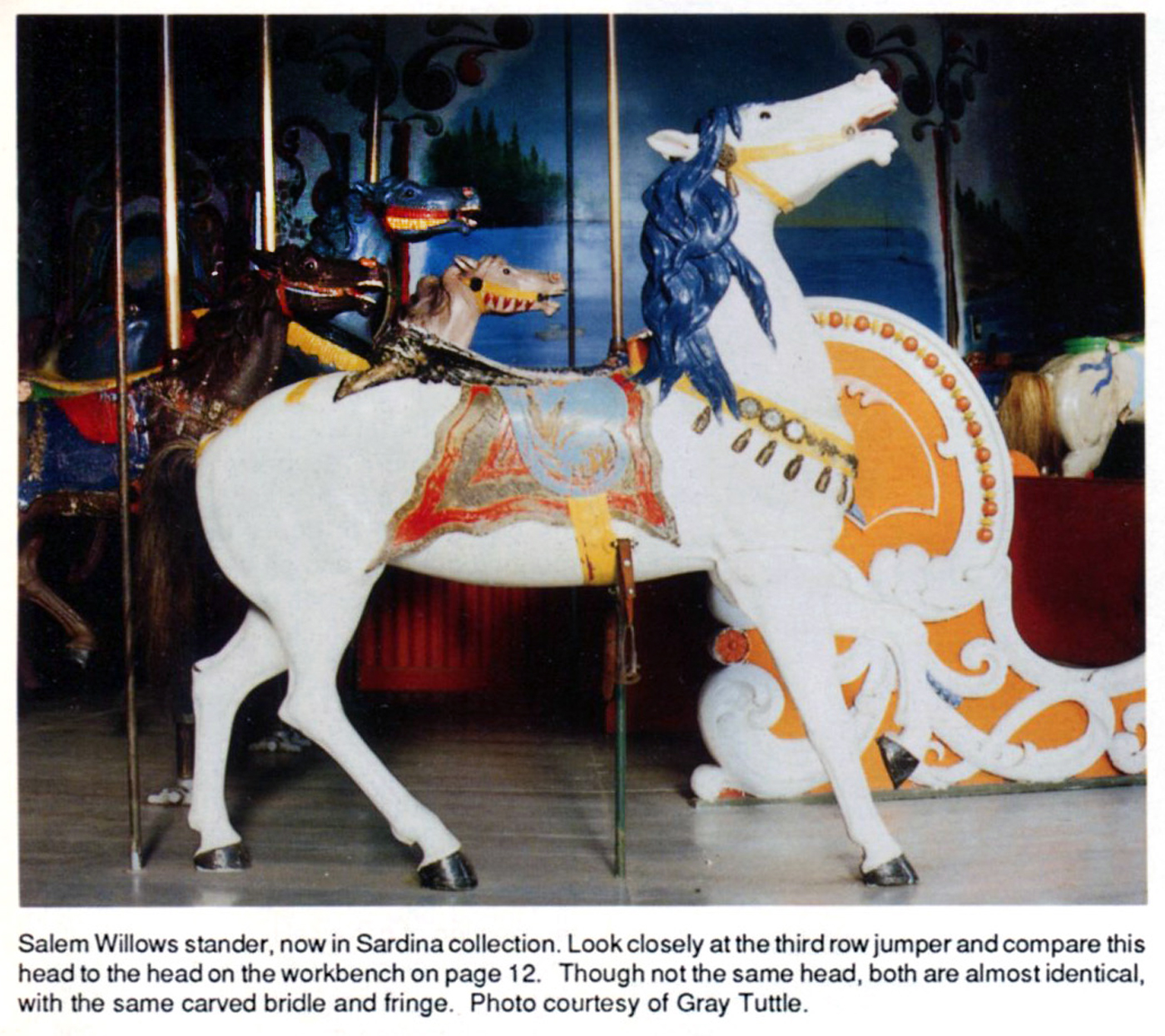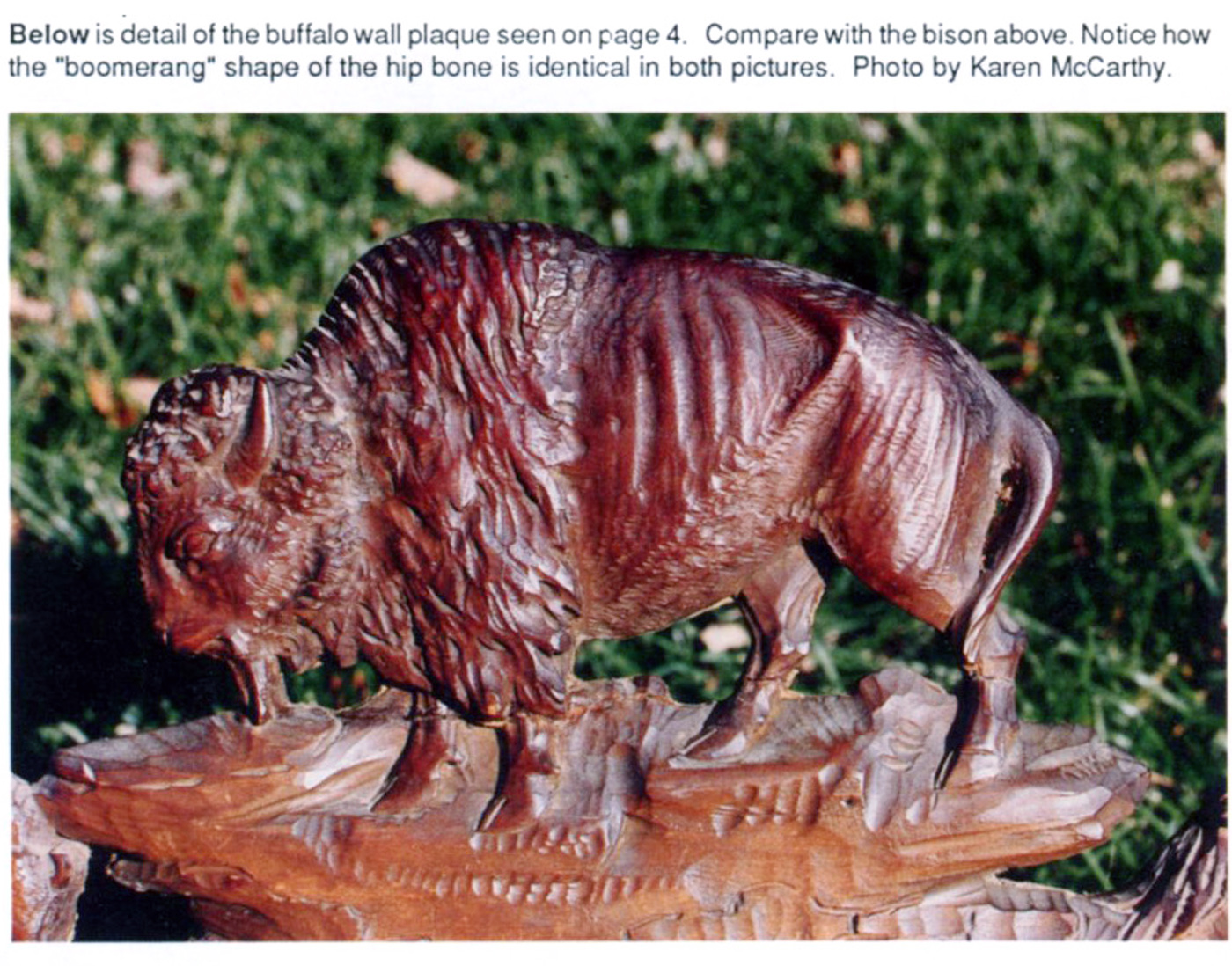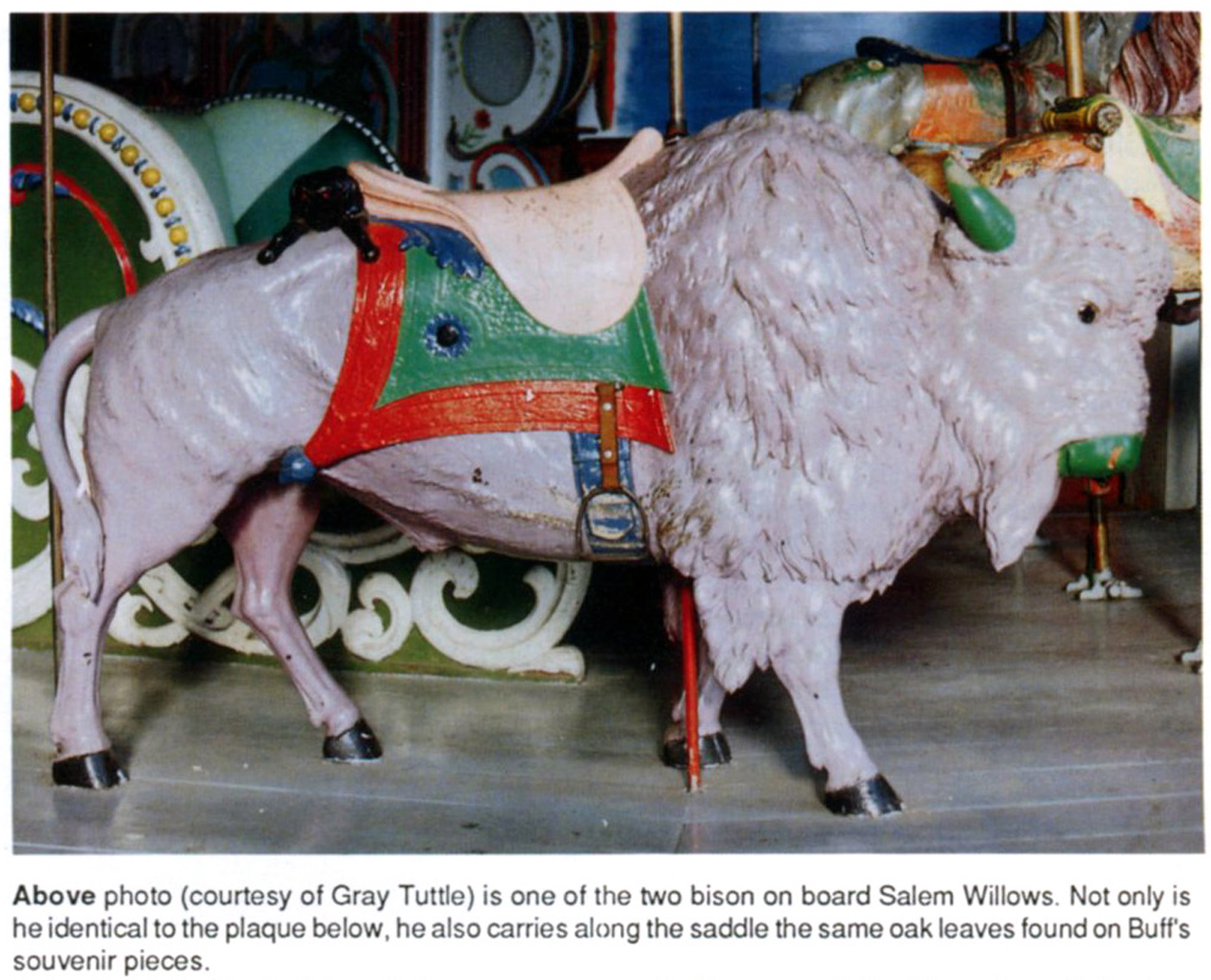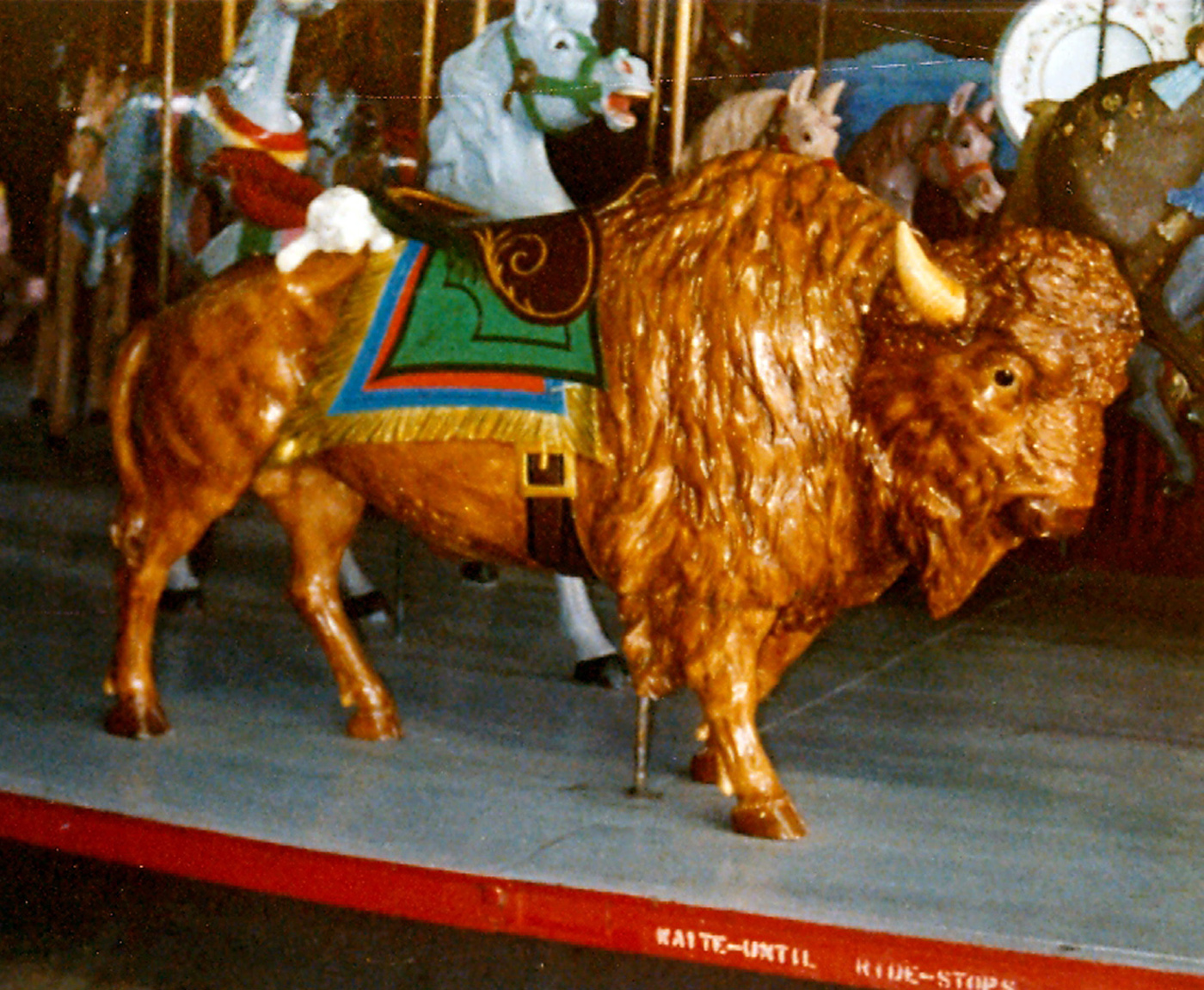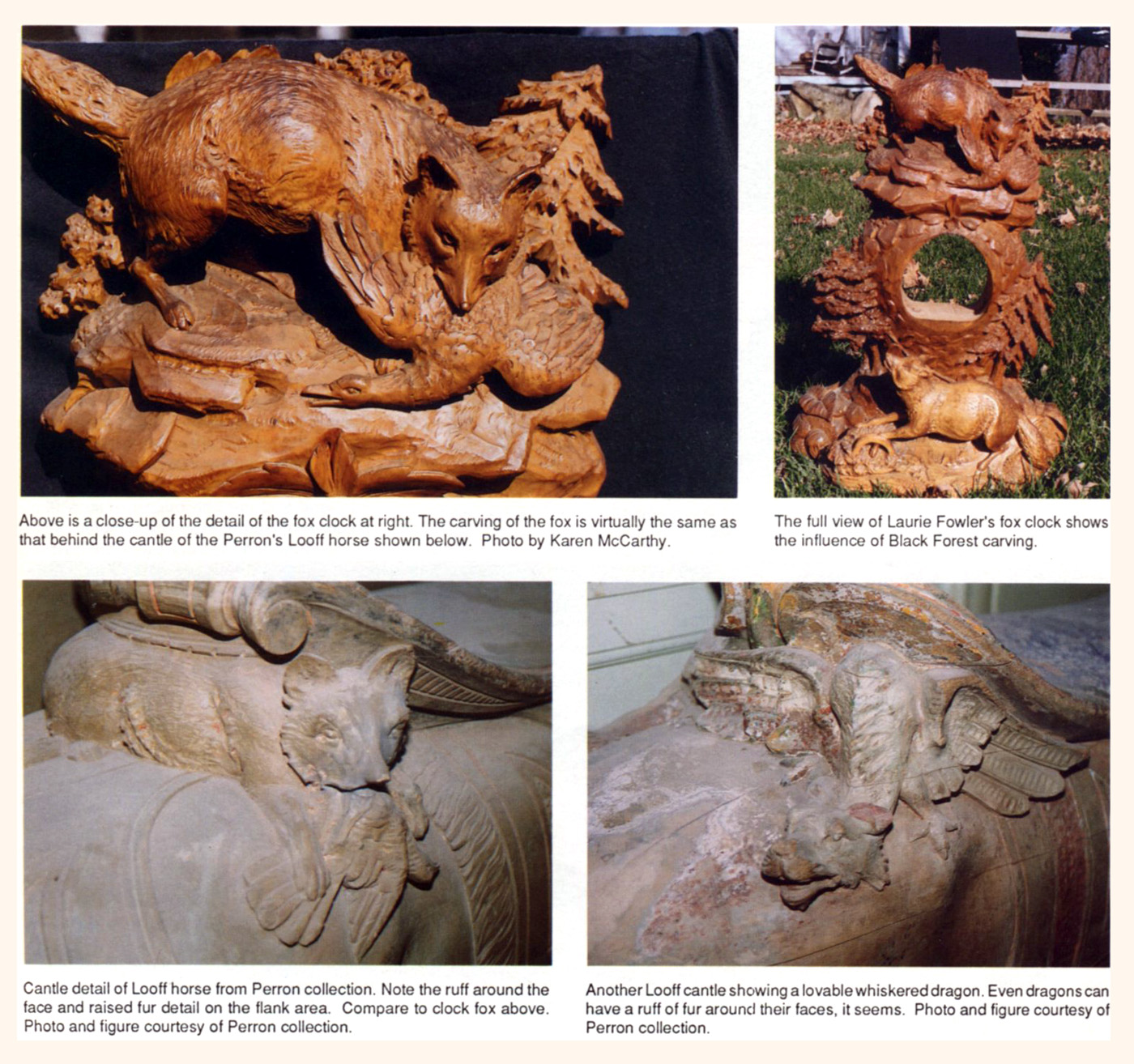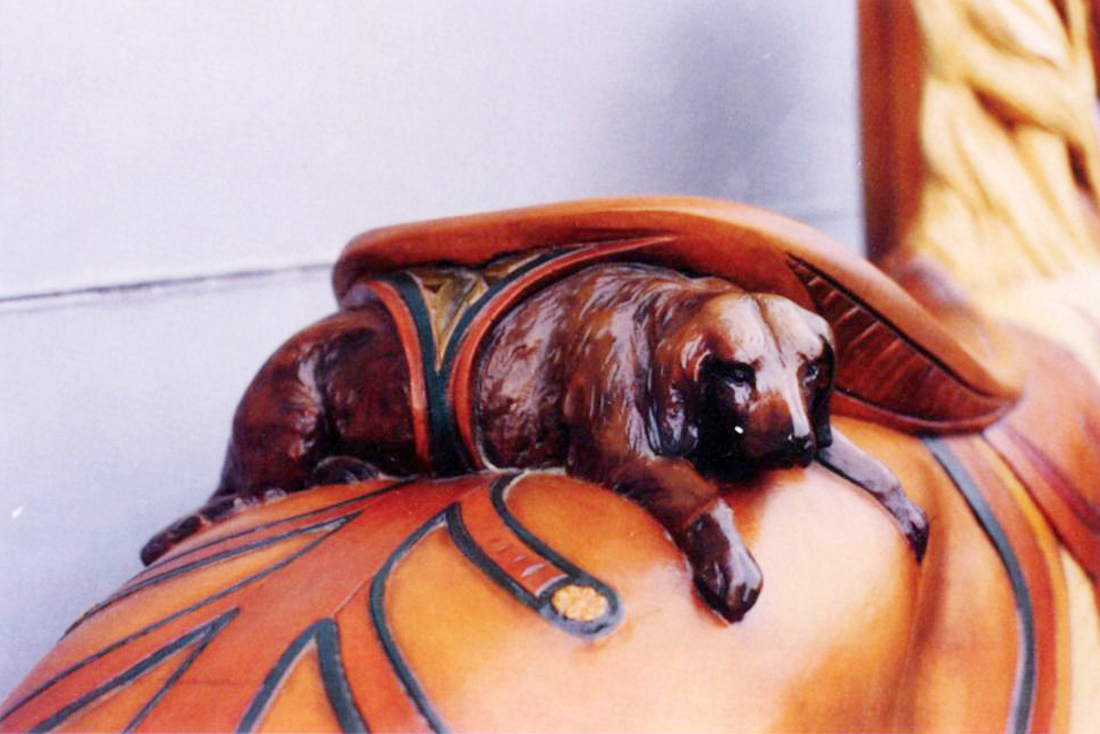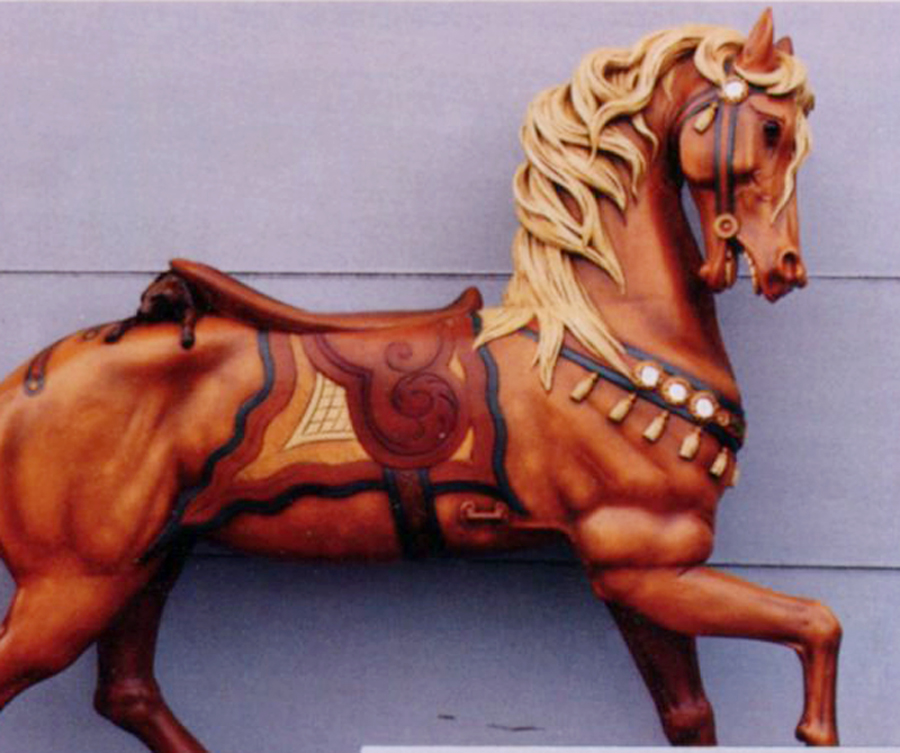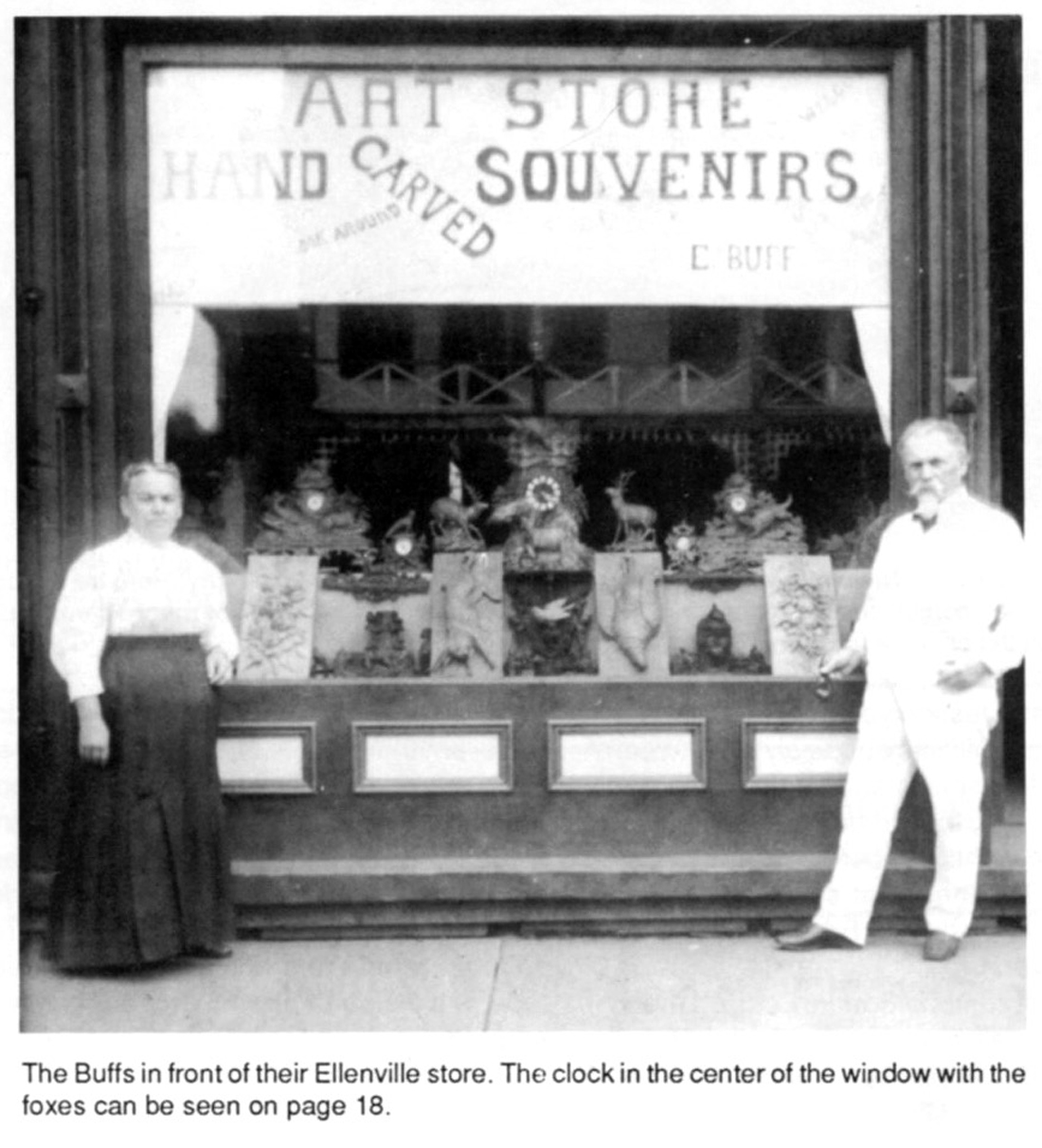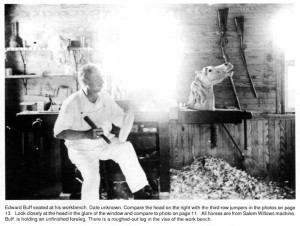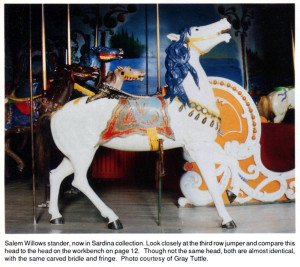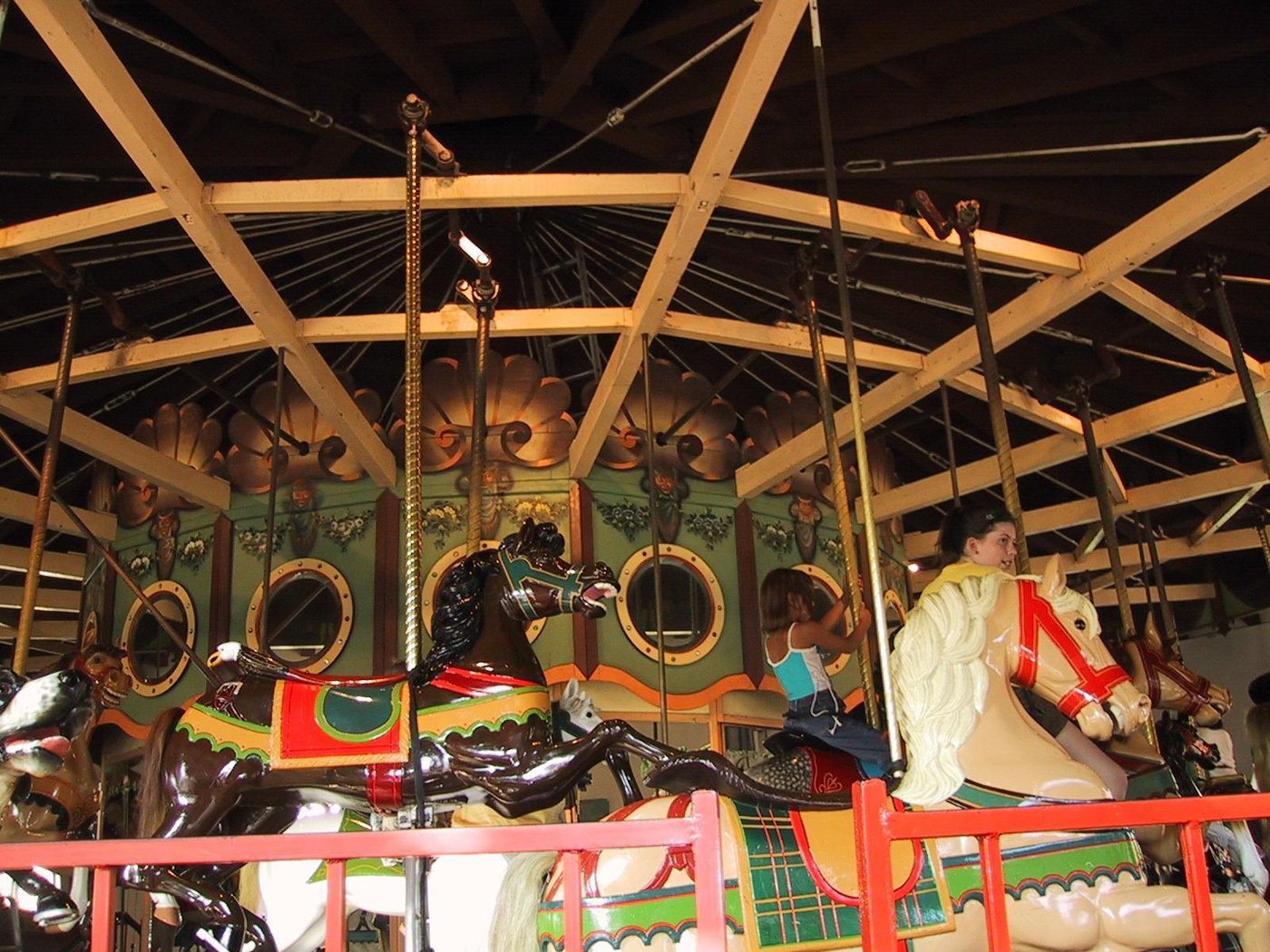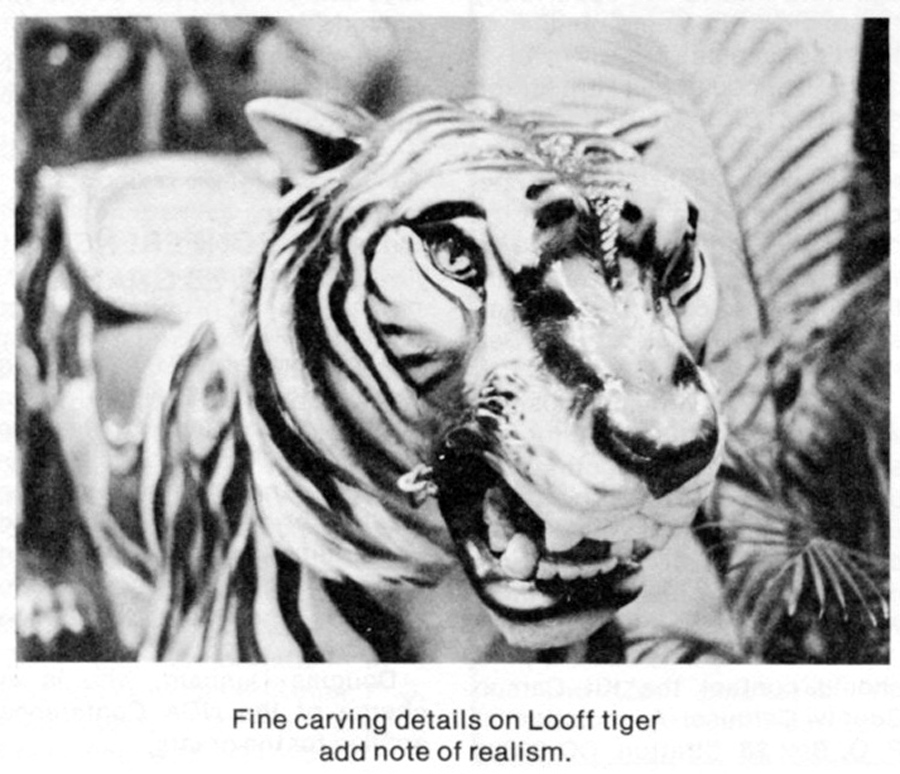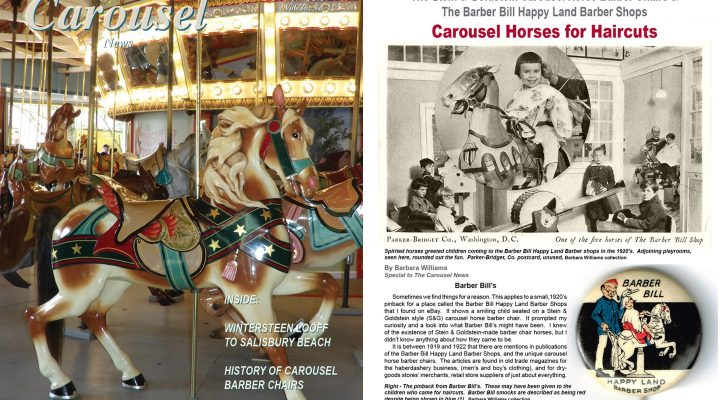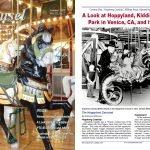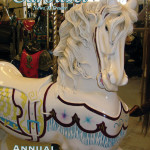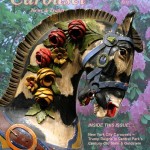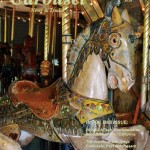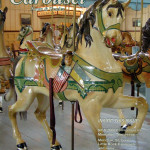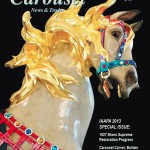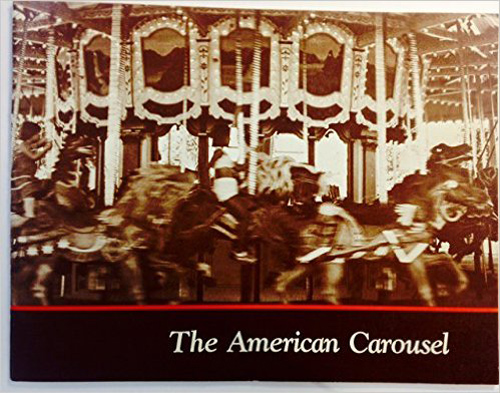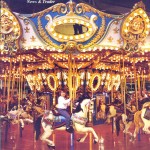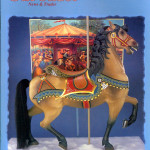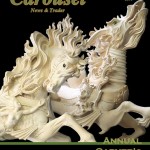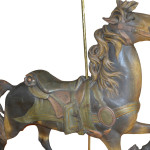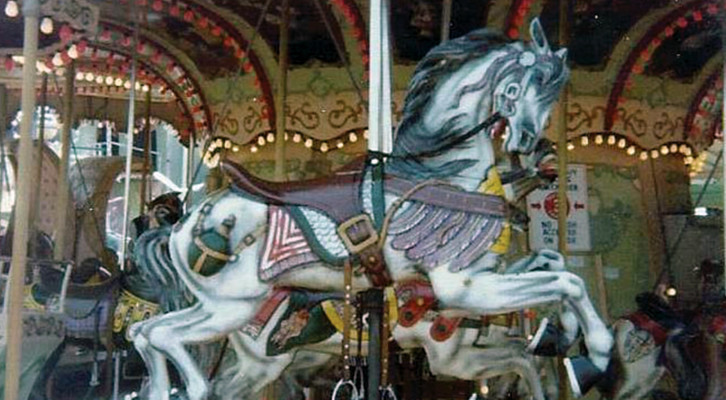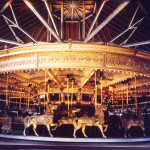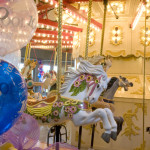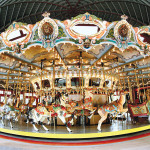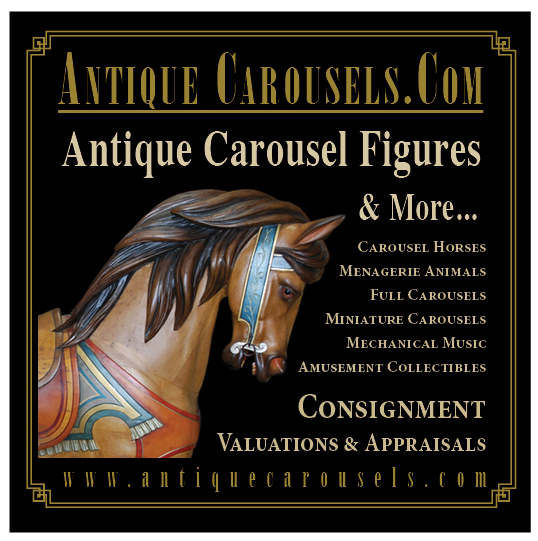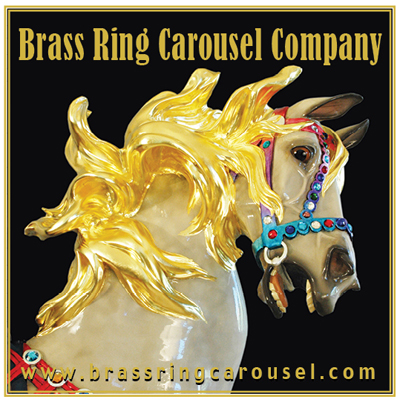“Edward Buff of New York worked freelance for carousel carver and builder, Charles I. D. Looff at the turn of the century. Photographs show him carving in his workshop in upstate New York. Buff is credited with carving the three Bison, St. Bernard and a number of horses and other figures on the Salem Willows Looff Carousel.”
Arabians, Andalusians, Wildlife and Edward Buff, Unknown Carousel Animal Carver for Charles Looff
Story by Karen McCarthy
The first question you may ask is: What connection could there possibly be between horses, wild animals, and an undiscovered carver? To me, the circumstances and ironies still seem hard to believe.
Was it fate? Perhaps. But I feel that somehow, I have been chosen to deliver Edward Buff to the carousel world. This past summer Bonnie Fetter, a friend who, like myself, is a wild animal rehabilitator, unexpectedly dropped in over the weekend with another couple, looking for a horse (live, that is) to buy for her niece. I didn’t have anything for sale, but told her of an Arab mare I had recently sold to my good friend and equine cohort, Tina Cristiana Veder. Tina had bred the mare to her magnificent Andalusian stallion, Destinado/Dacia IV, and was offering her in foal for resale.
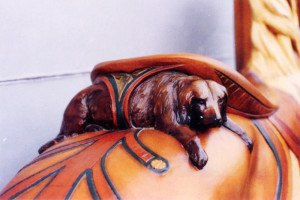 I invited them in to see some videotape of Destinado performing, and as they entered the living room they spotted two of our Carmel horses. The conversation quickly shifted gears, and Bonnie told me that Laurie’s great-great grandfather had carved carousel animals. Excitedly I asked who he was, and what factory he worked for. She said he had been self-employed, and his name was Edward Buff. Not recognizing the name, I then asked where he lived and where his shop had been. Laurie told me the town was named New Baltimore, down in the Catskill mountains, along the Hudson River. Still nothing clicked, and I thought, “Oh, he probably carved a few primitive animals for one or two obscure machines. Nevertheless, I asked her to send me more information on Mr. Buff.
I invited them in to see some videotape of Destinado performing, and as they entered the living room they spotted two of our Carmel horses. The conversation quickly shifted gears, and Bonnie told me that Laurie’s great-great grandfather had carved carousel animals. Excitedly I asked who he was, and what factory he worked for. She said he had been self-employed, and his name was Edward Buff. Not recognizing the name, I then asked where he lived and where his shop had been. Laurie told me the town was named New Baltimore, down in the Catskill mountains, along the Hudson River. Still nothing clicked, and I thought, “Oh, he probably carved a few primitive animals for one or two obscure machines. Nevertheless, I asked her to send me more information on Mr. Buff.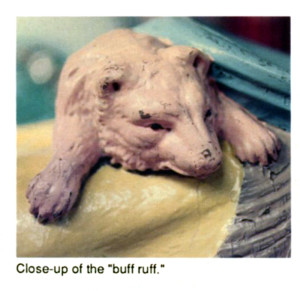
A couple of weeks passed, and I received in the mail a photocopy of a newsletter published in 1981 by the local historical society of New Baltimore, a tiny, rural town in upstate New York with a population of approximately 3,500. I was shocked when I looked at two of the photos that pictured carousel animals! How could someone with so much talent still be unknown to us? Evidently Rip Van Winkle’s resting place wasn’t the only secret hidden away in the Catskills.
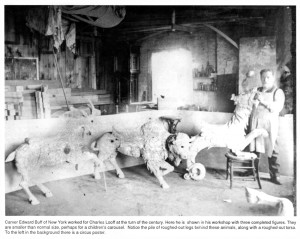 Determined to learn more, I asked Bonnie if she’d like to come with me to an antique estate sale in New Baltimore, on the outside chance that I might meet someone who could tell me more about Edward Buff. What took place there was a once in a lifetime happening. As this was an estate sale held on-site, everyone brought lawn chairs. The auctioneer’s tent was set up in the back yard of the old farmhouse.
Determined to learn more, I asked Bonnie if she’d like to come with me to an antique estate sale in New Baltimore, on the outside chance that I might meet someone who could tell me more about Edward Buff. What took place there was a once in a lifetime happening. As this was an estate sale held on-site, everyone brought lawn chairs. The auctioneer’s tent was set up in the back yard of the old farmhouse.
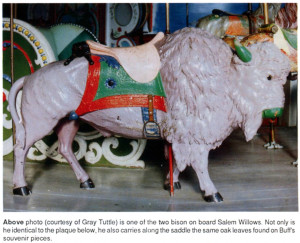 We sat down and previewed the auction contents which, for the most part, were uninteresting, but I was curious about a couple of Persian rugs. About an hour into the sale they came up, but went much higher than I dared to bid. Prices were generally high so we decided to try and catch another auction that had been advertised. Bonnie went to use the phone to get directions. All of this time there had been an older couple sitting right next to me, but they didn’t appear to have a bidding number and weren’t doing much of anything. So I thought, “What do I have to lose?” as I leaned over to ask the gentleman if he lived in New Baltimore. He replied “Yes,” so my next question was did he know of a woodcarver named Edward Buff. His response was, “Certainly. What would you like to know?”
We sat down and previewed the auction contents which, for the most part, were uninteresting, but I was curious about a couple of Persian rugs. About an hour into the sale they came up, but went much higher than I dared to bid. Prices were generally high so we decided to try and catch another auction that had been advertised. Bonnie went to use the phone to get directions. All of this time there had been an older couple sitting right next to me, but they didn’t appear to have a bidding number and weren’t doing much of anything. So I thought, “What do I have to lose?” as I leaned over to ask the gentleman if he lived in New Baltimore. He replied “Yes,” so my next question was did he know of a woodcarver named Edward Buff. His response was, “Certainly. What would you like to know?”
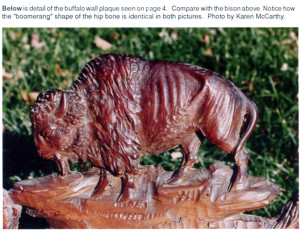 I started bombarding him with questions about carousel animals at 90 miles an hour. I explained that I wanted to find out more about this man, but all had to go on was an old local historical society newsletter. He then said, “Well, I wrote that article. I almost fell through my lawn chair!
I started bombarding him with questions about carousel animals at 90 miles an hour. I explained that I wanted to find out more about this man, but all had to go on was an old local historical society newsletter. He then said, “Well, I wrote that article. I almost fell through my lawn chair!
Talk about hitting the lottery! Not only had I sat right down next to Walter Dietz, the historian who authored the 1981 article, but he in turn directed me to the home of Louise Krietmeier, Buff’s great-granddaughter, who just happened to have the original photographs showing the carousel animals. She very generously agreed to loan me her photos, and also invited us to view her collection of carvings done by her great-grandfather. These pieces were small wall plaques, napkin rings and mantle clocks that resembled Black Forest carvings, only I thought the animals depicted on Mr. Buff’s pieces were much more detailed and lifelike. The clocks were especially beautiful and intricate, with deer, acorns and oak leaves all carved around enameled faces with delicate, filigreed hands.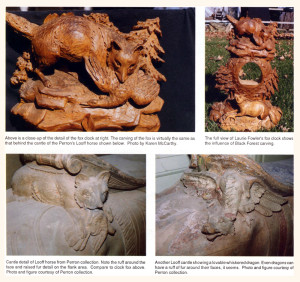
Equipped with these original photographs, I rushed home and pulled out every piece of reference material I owned, focusing on Looff animals from the 1880-1900 period. The pieces of the puzzle were beginning to fall into place. Readily identifiable, Buff’s horses have very sensitive, pretty heads, beautiful mane flow and an unusual, deeply carved ear. Muscles are also well defined, sometimes almost too much so. But what struck me when I saw Mrs. Krietmeier’s collection of pieces was now even more apparent – the secondary carvings behind the saddles of Looff animals carved by Buff were the exact same birds, foxes, dogs, etc. that were on his souvenir pieces. It was almost as though these whimsical critters were his “signature” on an animal. What follows is a brief summary of the historical society newsletter about Edward Buff, along with information I have obtained from family members, Walter Dietz, and residents of New Baltimore. I have tried to put this together with photos of Looff animals I’m certain were carved by Buff along with my photographs taken of his “souvenir” pieces that depict the same little birds, dogs and the like that crouch behind the cantles of turn-of-the-century Looff animals…
READ THE ENTIRE ARTICLE IN THE MAY 1992 CAROUSEL NEWS & TRADER ONLINE >>>
SEE THE SALEM WILLOWS LOOFF CAROUSEL PHOTO GALLERY HERE >>>

